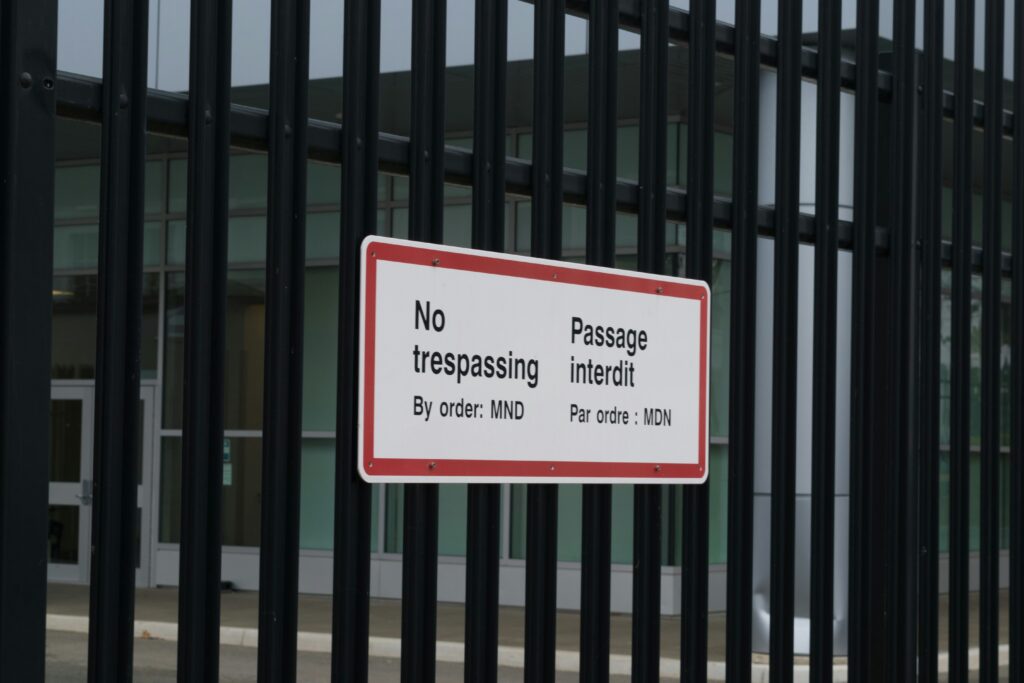Published On: 25th June 2025
Authored By: Tanya kumari
Asian Law College
Court : Supreme court of India
Judges : Justice J. S. Verma (then Chief Justice of India)
- Justice Sujata V. Manohar
- Justice B. N. Kirpal
These three judges formulated the “Vishakha Guidelines,” which provided a definition of sexual harassment at the workplace and established guidelines for its prevention and redressal.
Parties : Vishakha and Others (Petitioners):
- Vishakha was a non-governmental organization
- “Others” refers to various women’s rights groups and social activists who joined the petition.
- State of Rajasthan (Respondent):
- Ts represents the government of the state of Rajasthan, as the case originated from incidents within that state’s jurisdiction
Procedural History and Context:
-
- This case originated as a Public Interest Litigation (PIL) under Article 32 of the Constitution of India, invoking the Supreme Court’s writ jurisdiction.
- The petition was filed by Vishakha, a non-governmental organization, and other social activists, seeking judicial intervention to address the lacuna in existing legal frameworks concerning sexual harassment in the workplace.
- The factual matrix arose from the egregious gang rape of Bhanwari Devi, a social worker, which exposed the systemic failure of the state to protect women’s fundamental rights.
Statement of Facts (Factum Probandum):
- Bhanwari Devi, while discharging her official duties under the Rajasthan government’s Women Development Programme, attempted to prevent a child marriage.
- As a consequence, she was subjected to a heinous act of gang rape by members of the dominant Gujjar community, constituting a clear act of reprisal.
- The subsequent judicial proceedings in the subordinate courts resulted in the acquittal of the accused, predicated on evidentiary deficiencies and societal biases, exacerbating the petitioners’ concerns regarding the efficacy of the existing legal regime.
Legal question:
“In the absence of explicit domestic legislation, can the Supreme Court formulate judicially enforceable guidelines to protect women from sexual harassment in the workplace, and can these guidelines be grounded in the fundamental rights guaranteed by the Indian Constitution and interpreted in light of international conventions?”
- Legal Issues (Juris Quaesitum):
- The primary legal issue before the Supreme Court was the absence of explicit statutory provisions addressing sexual harassment in the workplace, creating a legislative vacuum.
- The Court was tasked with determining the scope and ambit of fundamental rights enshrined in Articles 14 (equality before law), 19(1)(g) (freedom to practice any profession), and 21 (right to life and personal liberty) of the Constitution of India, in the context of workplace sexual harassment.
- A critical point of contention was the State’s duty to provide a safe and secure working environment for women, and the legal mechanisms to enforce this duty.
- The court also had to determine if it could create guidelines that would have the force of law.
- Arguments of the Petitioners (Actor):
- The petitioners contended that sexual harassment constituted a direct infringement of women’s fundamental rights, particularly the right to equality and the right to a dignified life.
- They argued that the absence of specific legislation violated the constitutional mandate of gender equality and non-discrimination.
- Reliance was placed on international legal instruments, notably the Convention on the Elimination of All Forms of Discrimination against Women (CEDAW), ratified by India, to emphasize the State’s international obligations.
- The petitioners argued, that in the absense of legislation, the supreme court had the power to create guidelines, that would be legally binding, until legislation could be created.
Judgment and Ratio Decidendi:
- The Supreme Court, recognizing the legislative vacuum and the exigency of the situation, exercised its inherent jurisdiction under Article 32 and Article 141 of the Constitution to promulgate the “Vishakha Guidelines.”
- The Court’s ratio decidendi was predicated on the interpretation and application of fundamental rights in light of international human rights norms.
- The Court defined “sexual harassment” in a comprehensive manner, encompassing unwelcome sexually determined behavior, including physical contact, advances, demand or request for sexual favors, sexually colored remarks, and display of pornography.
- The Court imposed a positive obligation on employers to prevent and redress sexual harassment, mandating the establishment of complaint mechanisms, including complaint committees with a majority of women.
- The “Vishakha Guidelines” created a form of judicial legislation, stating that these guidelines would hold the force of law until a statute was enacted.
- The Supreme Court also directed the central and state governments to take immediate steps to implement the guidelines and to enact appropriate legislation.
Legal Principles and Significance (Obiter Dicta and Sequelae):
- The Vishakha judgment affirmed the expansive interpretation of fundamental rights, particularly Article 21, to include the right to a safe and secure working environment, free from sexual harassment.
- The Court emphasized the judiciary’s role as a sentinel of fundamental rights and its power to provide interstitial legislation in the absence of statutory provisions.
- This case solidified the application of the principle of “gender equality” as a foundational norm in Indian jurisprudence.
- The judgment laid the groundwork for the Sexual Harassment of Women at Workplace (Prevention, Prohibition and Redressal) Act, 2013, which codified the Vishakha Guidelines.
- The case also highlighted the legal enforceability of international treaties that had been ratified by India.
- The case became a landmark precedent, for the protection of women’s rights in India
Conclusion
The conclusion of the Vishakha v. State of Rajasthan case is far from a simple summary; it represents a profound articulation of judicial activism and a significant leap forward in Indian jurisprudence concerning gender justice. To fully elaborate on this conclusion, we must analyze its multifaceted implications: Elaboration of the Conclusion:
Judicial Legislation and the Filling of a Legislative Vacuum:
- The Supreme Court’s decision to promulgate the Vishakha Guidelines was a bold exercise of its power to provide interstitial legislation. This was not merely a set of recommendations; the Court explicitly stated that these guidelines would have the force of law until Parliament enacted specific legislation.
- This act underscores the judiciary’s role as a guardian of fundamental rights, particularly when the legislative and executive branches fail to address critical societal issues.
- The Court’s action was a recognition that immediate measures were necessary to protect women’s rights, even in the absence of statutory provisions.
Affirmation of Fundamental Rights and International Obligations:
- The judgment reinforced the expansive interpretation of Articles 14, 19(1)(g), and 21 of the Indian Constitution, extending their purview to encompass the right to a workplace free from sexual harassment.
- By referencing CEDAW, the Court demonstrated its commitment to upholding India’s international obligations. This established a precedent for incorporating international human rights norms into domestic law.
- The court created a strong legal bond between the fundamental rights of the Indian constitution, and ratified international treaties.
Setting a Precedent for Gender Justice:
- The Vishakha Guidelines provided a clear and comprehensive definition of sexual harassment, which had been lacking in Indian law. This definition formed the basis for future legislation and judicial interpretations.
- The judgment placed a positive duty on employers to prevent and redress sexual harassment, shifting the burden of responsibility from individual victims to institutions.
- It mandated the establishment of complaint mechanisms, including complaint committees with a majority of women, ensuring a more equitable and sensitive approach to handling complaints.
Catalyst for Legislative Action:
- The Vishakha judgment served as a catalyst for the enactment of the Sexual Harassment of Women at Workplace (Prevention, Prohibition and Redressal) Act, 2013.
- This legislation codified the principles laid down in the Vishakha Guidelines, transforming them into statutory law.
- The result of the Vishakha case, is that the supreme court forced the legislative branch to do their job, and create a law that protected the women of India.
A Paradigm Shift in Workplace Culture:
- Beyond its legal implications, the Vishakha judgment contributed to a paradigm shift in workplace culture, raising awareness about sexual harassment and promoting a more respectful and inclusive environment.
- It empowered women to speak out against harassment and seek redressal, fostering a sense of accountability and deterrence.
- The case helped to change the social norms, that had previously allowed for the harassment of women, to be ignored.
The Courts role as a social reformer:
- This case showed the supreme courts ability, and willingness to act as a social reformer, when the normal legislative process fails.
- The supreme court showed that it was willing to create new law, when it was needed to protect the fundamental rights of the citizens of India.
In essence, the conclusion of the Vishakha case represents a powerful affirmation of the judiciary’s role in safeguarding fundamental rights and promoting social justice. It was a landmark decision that transformed the legal landscape concerning sexual harassment in India, paving the way for greater protection of women’s rights and a more equitable society.




